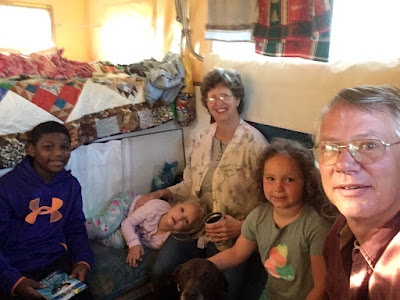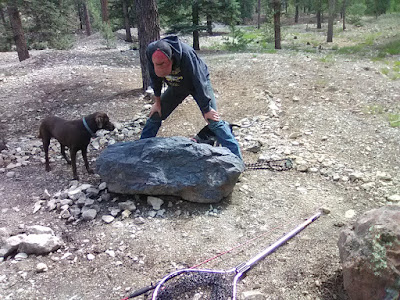My To-Do list didn't see as much get done as I had hoped, but you cannot say that I didn't try...
This could get a 1/2 check mark since I have fabric for the final border, backing and binding on order (and fingers crossed) it will be here in time for me to get this quilt done before the close of the month since it was my One Month Goal that I linked up at Elm Street Quilts
I started with great ideas and plans... and then I discovered that the prepared backing that my client sent was too small. A quick assessment of the situation allowed for a fast answer...
Use the fabric that she had intended for the binding to make the backing large enough and use some grey dotted fabric left from another quilt that she had sent for the binding.
That little derailment set me off course and, honestly, Ummmmmmm.... the only excuse I have is that I'm still unsure of how to quilt it.
This derailing did allow for me to get most of the other items on my list done.
The soaring bird block kit is in my sewing bag and ready to go whenever we are. The Big Horn Sheep pattern has been printed out and fabric selected and in my sewing bag as well so that the pieces and fabric can be prepped on the road.
On Saturday I joined the Saturday Sew-in over at the Inquiring Quilter and had intentions of continuing the quilting of the Cake Walk Quilt. It was mid-morning that I found I had made several excuses of why I wasn't in my studio...
That was when I remembered that I wanted to do something FUN! I printed out my bear pattern from Fiona Sandwich and began the process of making a block to mark off one of her Summer Camp Sewing Challenge items... Make a block using unusual colors.
I sat down in the recliner and hand-stitched up this little gal in purple as I watched shows on Netflix ~ something I haven't done for several weeks! I had told myself that when this bear was done then I would go quilt... That was a big ol' NOPE! Instead I made up two more blocks - these were machine pieced.
I was remembering the trapper's blankets at Bent's Fort Trading Post when ever I would visit the site as a kid and thought I would use the stripes pattern to replicate such a blanket.
☑️ Release Block #6 of the Pieces of the Santa Fe Trail Sew Along. This block is from Kathie Laposata, one of the sew along participants.
I love her adjustment to the center patch to make it a 3-color block.
Marion Russell tells tales of learning from the Sisters at the Academy, what they taught and how they often called her and her brother "little heretics". She shares her memories of how a man in jail captured her attention by singing and told her of his own daughter at home and how he missed her so...
Follow the link above to find the rest of the story, the free pattern... and get a recipe for some Molasses Cookies.
Well... it would appear that I have a few items that are obviously going to be on my To-do list for the coming week.
❧ The Memory quilt. Once the fabric arrives this one will have my full attention! I already know that I am going to use a super-sized Baptist Fan quilting design, like I used on my Pieces from the Past Quilt.
❧ Cake Walk quilt...
You know where you can find me!
If you were to choose a "Fun!" quilty project to do what would it be?
Leave a comment... I love to hear from all of you!
Stay calm and keep quilting,
Melva
Linking with:
To Do Tuesday at Chris Knits & Sews
Mid-week Makers at Quilt Fabrication
Wednesday Wait Loss at The Inquiring Quilter
Stitch Sew & Show at Life in the Scrap Patch
Put Your Foot Down at For the Love of Geese
Needle & Thread Thursday at My Quilt Infatuation
Can I Get A Whoop Whoop at Confessions of a Fabric Addict
Off The Wall Friday with Nina Marie
Brag About Your Beauties at From Bolt to Beauty
Peacock Party at Wendy’s Quilts and More
Friday Foto Fun at Powered by Quilting
Finished or Not Friday at Alycia Quilts
Scrap Happy Saturday at Super Scrappy
UFO Busting at Tish’s Wonderland
Oh Scrap! at Quilting is More Fun Than Housework
Sunday Stash at QuiltPaintCreate
Patchwork & Quilts at The Quilting Patch












































